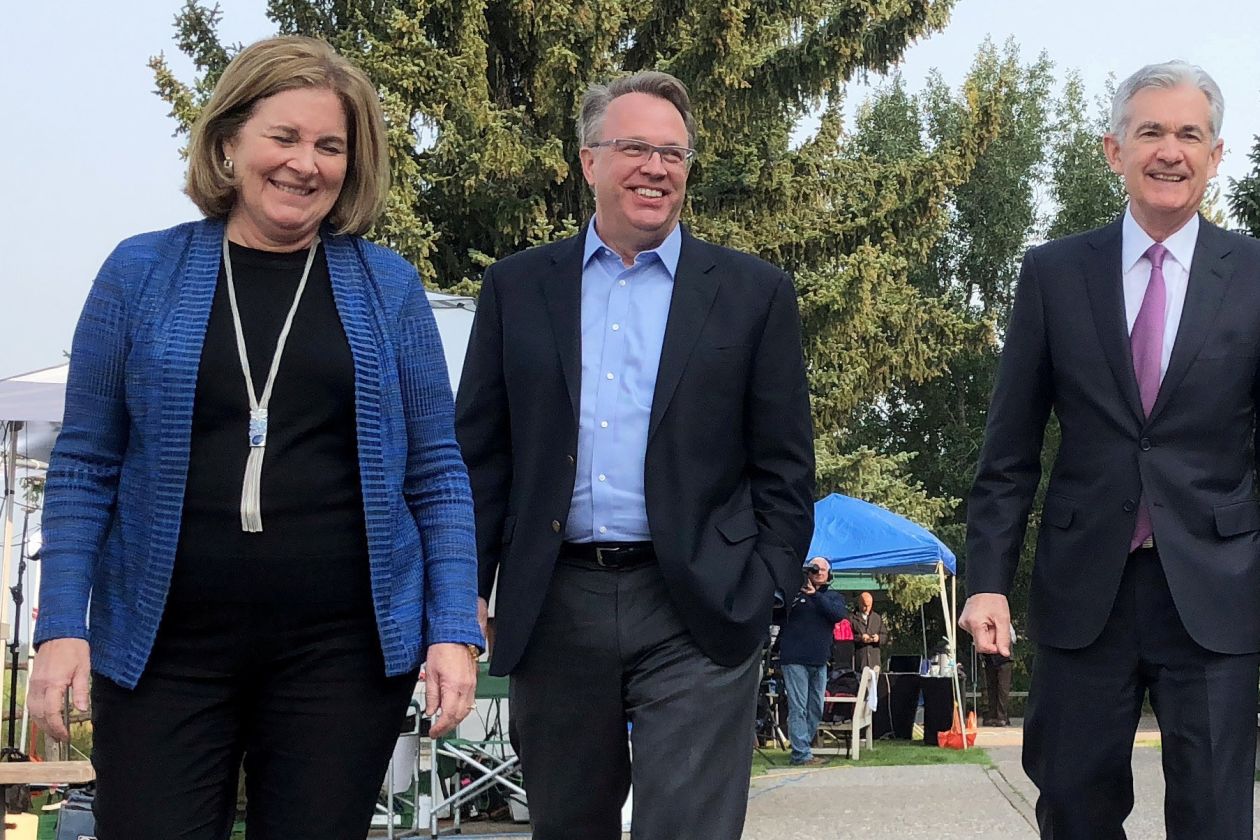By Michael S. Derby, Wall Street Journal–
Kansas City Fed leader Esther George offered support Wednesday for the central bank’s plans to hold rates steady for now and offered no clues about what she wants to happen with monetary policy in the future.
“The economy’s fundamentals are sound,” Ms. George said. “Downside risks are notable however as my outlook calls for growth to slow to trend, with moderating job gains and low inflation,” the official said, adding “in these circumstances, monetary policy can take a wait-and-see approach.”
Ms. George made the remarks at a gathering of the Money Marketeers of New York University. She is a voting member of the rate-setting Federal Open Market Committee, which met last week in a gathering that left short-term rates unchanged for a second time this year. The Fed also offered forecasts that indicated it expects to maintain its overnight target rate of between 2.25% and 2.50% for the remainder of the year.
The Fed is taking a cautious approach amid mixed U.S. data, a slowing global economy and unsettled markets. Inflation that is below its 2% target is giving the Fed space to hold steady. Ms. George has long been an advocate of higher rates, but she has joined with her colleagues to support no action for now.
Ms. George said given that the Fed raised four times last year, a pause in increases was a good idea. She said it can take time for monetary-policy changes to affect the economy and it is appropriate to see how past actions affect the economy before making more changes in rates. Ms. George also said she doesn’t see the Fed’s late-2018 rate increases as mistakes.
Ms. George was upbeat about the economic outlook and wasn’t particularly worried by the persistence of weak inflation relative to the Fed’s goals.
“My outlook for continued, but somewhat more moderate growth, is tied to expectations that job gains, wage increases and consumer confidence will remain supportive of consumer spending,” she said. “Over the medium term, I see the biggest risk coming from slower growth abroad, particularly in China, the euro area, and the United Kingdom,” she said.
When it comes to prices, “the current outlook for inflation appears to be benign, and I consider the recent behavior of inflation to be broadly consistent with our price stability mandate.”
The fact that the Fed has failed to hit its 2% inflation target at any point since adopting it in 2012 doesn’t bother Ms. George, who said the shortfall wasn’t a “major concern” amid wide fluctuations in energy prices.
Ms. George said low inflation data doesn’t square up with the public’s experience. “I hear few complaints about inflation being too low,” she said. “I am more likely to hear disbelief when I mention that inflation is as low as measured in a number of key sectors. I see this reaction to inflation as a good sign” that the Fed is in fact meeting its inflation goals.
Ms. George said it would be a mistake to think that inflation can’t pick up again. She said she was also watching for “valuation pressures” in financial markets tied to Fed policy.
The central banker also weighed into the Fed’s ongoing review of new policy regimes. It is weighing whether it needs to modify how it conducts interest-rate policy in a world where short-term rates are likely to be lower than they historically have been, and inflation weaker and less driven by the job market than was once the case.
Ms. George offered a note of caution that some of the options now under consideration have notable pluses and minuses and may not offer much benefit over how the Fed is currently conducting policy.
Ms. George did say that she is wary of any move to overshoot the Fed’s 2% price goal.
“I see little reason to be concerned about inflation running a bit below its longer-run objective,” Ms. George said. “I am not convinced that a slight undershoot of inflation below objective requires an offsetting overshoot of the objective,” she said.
Write to Michael S. Derby at michael.derby@wsj.com


Leave A Comment
You must be logged in to post a comment.